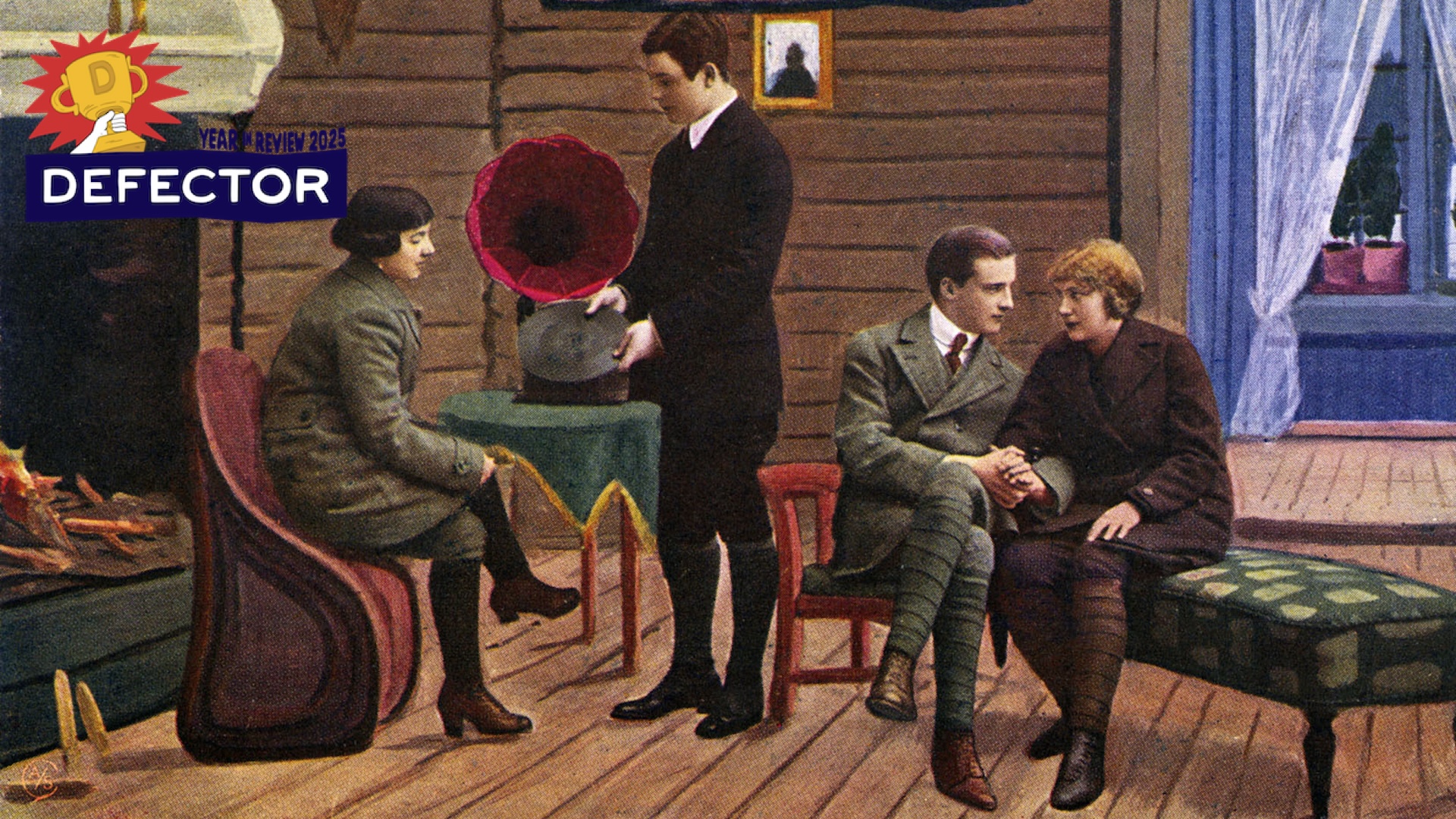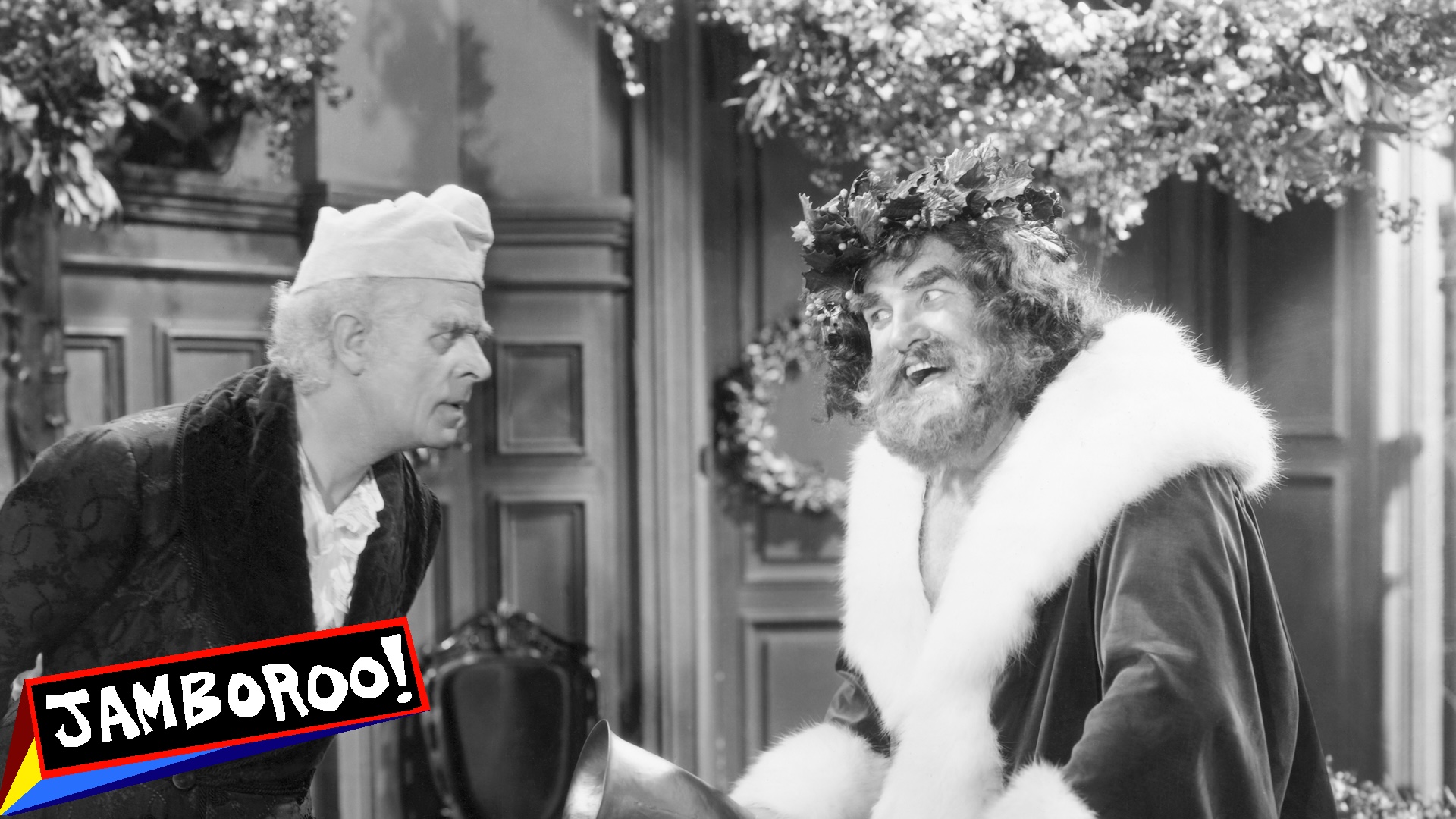My minivan got broken into the other day. It was parked on a D.C. street around the corner from my house. I left it unlocked, so no window was smashed to get in. As far as I can tell, nothing was taken. I only know I’d been burgled because I found a golf putter the perp left in the back of the van. I haven’t played a round of golf or owned a set of clubs in at least 15 years. So I was left giggling about being the victim of an absurd crime just as the White House is taking absurd steps to quell a non-existent crime epidemic that the president insists, despite all the evidence to the contrary, is gripping my hometown. I took a photo of the crime scene to send to friends, figuring they could use some giggles, too.
Laughs don’t come easy since Donald Trump’s war on the city has become almost literal. Admitting that I’m afraid of the federal government makes me feel wacko and weak. But, hell, hearing that at least 2,000 National Guardsmen from all across the country will soon be deployed in D.C., and likely armed, sounds crazy frightening. He’s already taken over the city’s police department and assigned an untold number of officers from federal law enforcement agencies to the Nation’s Capital to write traffic tickets and check citizenship status.
Living in the District means accepting that “No Taxation Without Representation” is just a saying found on our license plates. The reality is most of the rest of the country doesn’t even know, let alone care, that D.C.’s 700,000-plus residents have zero representation in Congress, even as we pay a lot more taxes per capita than any state in the union. (In fact: 40 percent more than second-place California.) Like any local of a certain age, I’ve seen lots of federal overreach. Like in 1996, when Congress declared a “state of emergency” here and took over the D.C. public school system. The feds replaced the elected school board with an appointed panel of overseers, and put a retired U.S. Army general, Julius W. Becton Jr., in charge. The takeover was a fiasco. City schools opened three weeks late in Becton’s first year on the job because of the disorganization the federal intrusion caused, and he left after only 17 months. Control of the schools was handed back to the mayor. And there’s that time when Rep. Bob Barr, a Georgia Republican, got Congress to prevent D.C.’s Board of Elections from even counting votes for a 1998 referendum to legalize medical marijuana in the city, even though the pot initiative was on the ballot. Residents eventually learned that 69 percent of the votes cast were in favor of legalization. But medical marijuana wasn’t sold legally in D.C. until 2013.
Trump didn’t get more than six percent of the votes in D.C. in any of his three presidential runs, and he’s seemed out for revenge on the townspeople ever since his second term began. He bullied the mayor into dismantling the Black Lives Matter Plaza downtown, for example. And he turned a massive section of the city near the Mall into an ugly fortress by installing fences and barricades while throwing himself a military parade on his birthday. He got himself installed as chairman of the Kennedy Center board, and quickly did away with the beautiful rainbow spotlights that traditionally shined on the side of the majestic building beside the Potomac River at night. Now, only red, white and blue lights are permitted. Then just ahead of the closing weekend of WorldPride 2025, an annual gathering of LGBTQ+ communities from around the globe that was hosted in the Nation’s Capital this year, the U.S. Park Service announced it was cutting off all access to DuPont Circle, an historically important landmark in the city’s gay rights movement, for no obvious reason other than to fuck with the celebrants.
But while all the aforementioned overlording was humiliating, in the end we survived. But now comes his martial-law-with-training-wheels plan. Nobody knows where it's going. Who thought we’d get police statehood before statehood?
“Our capital city has been overtaken by violent gangs and bloodthirsty criminals, roving mobs of wild youth, drugged-out maniacs and homeless people, and we're not going to let it happen anymore,” Trump said last week while rolling out his plan.
As has been pointed out by everybody with both a brain and a conscience, Trump’s depiction of the city as being crippled by crime is fictional. The Department of Justice and the D.C. Metropolitan Police Department announced months ago that total violent crime here in 2024 was at a 30-year low, with homicides falling by nearly a third. And the numbers for this year show even less violence.
Besides, we don’t need any more cops. According to a 2023 study from D.C.-based think tank Third Way, the city already has far more police officers per capita than any other American town. And that’s just counting the members of the city's main force, the Metropolitan Police Department, many of whose members were beaten on Jan. 6, 2021. There’s also a very visible local presence of uniformed officers from D.C. Transit Police, the U.S. Park Police, U.S. Secret Service, U.S. Capitol Police, ICE, and a ridiculous number of other federal agencies. (There’s a Bureau of Engraving and Printing Police force? Yup.)
But in the post-truth era, crime stats, just like vote counts, economic indicators, and inauguration attendance numbers, are Trump’s to make up. So we’re in a state of emergency. And not only is the D.C. National Guard being deployed, but Guard members from states with much worse crime problems than ours are also being shipped in. Mississippi Gov. Tate Reeves, while announcing 200 National Guard troops from his state will assist Trump in his war on D.C., waxed as nonsensically as the president. “Crime is out of control there,” Reeves said, “and it’s clear something must be done to combat it.” Meanwhile: Mississippi’s capital city, Jackson, has a murder rate four times as high as D.C.’s.
“We cannot allow our cities to be overcome by violence and lawlessness,” said Louisiana Gov. Jeff Landry, while boasting about contributing 100 members of his National Guard to Trump’s D.C. folly. This despite the murder rate in Louisiana’s seat of government, Baton Rouge, being twice as high as the Nation’s Capital’s.
I grew up in Northern Virginia and have lived inside the Beltway my whole life, and I remember when the city had much bigger crime problems. In the early 1980s, my main hangout was a small rowhouse in a section of Northeast D.C., now known as the H Street Corridor, where some high school buddies lived right after college. That was one of the roughest neighborhoods in the city back then. Their house at 7th and G Sts. NE was a block and a half from the site of the Catherine Fuller murder of 1984, a heinous crime that became a national story, and the first local murder that politicians and law enforcement officials blamed on gangs. (The Fuller case, which ended with eight men serving a combined 200 years in prison for her killing, is still talked about a lot in D.C.)
I moved into the city for good in 1986. That’s the same year that crack came to town, and kicked off an era in which the Nation’s Capital was regularly recognized as the country’s murder capital. Mayor Marion Barry responded to the cocaine-induced crime wave by putting a residency requirement on all city employees, thereby forcing MPD officers to live inside city limits. Group houses with cops popped up all over town. I moved into one such house with a pair of brothers I knew since elementary school who grew up to be D.C. cops. I never saw The Wire, but after living in that house at the onset of the most violent era in the city’s history, I’d be surprised if anything in the show would surprise me. Among the period-piece remembrances is one when an MPD detective housemate brought home a big leather satchel packed with a sawed-off shotgun, stacks of $100 bills like I’d only seen in movies, and lots of baggies of crack rocks. He said he got it from the evidence room at the end of his workday and had only brought it home so he wouldn’t have to make that trip to the evidence room early in the morning before the trial commenced. Sure seemed fishy to my soft suburban self, since he could probably buy a house with what was in the satchel. But another cop housemate was right there to hear the same story and didn’t flinch, so I took it the detective was on the up and up. Just a crazy time.
That group house broke up in 1988 due to a couple cops’ marriages. So I moved to Mount Pleasant, a neighborhood in the center of town which was edgy and violent but also affordable and fun as hell. My apartment was at the corner of Mount Pleasant Street NW and Park Road NW, so I was right in the soup for the Mount Pleasant riots of 1991. That was several days of burning police cars and buses and looting businesses. D.C. cops triggered the donnybrook. A rookie MPD member arrested an El Salvadoran guy in what was then an overwhelmingly El Salvadoran neighborhood for drinking in public on Cinco de Mayo. As if that arrest wasn’t a bad enough decision, according to many witnesses, the same rookie cop then shot the guy while he was in handcuffs in the middle of a street festival in front of literally hundreds of onlookers. I missed the shooting and stayed inside on the first night of the ensuing lawlessness. But national TV networks and local stations broadcast the mayhem live. By the second night, I could no longer deal with all the anxiety of watching what looked like imminent armageddon on television. I went outside to take in the riot in person. I saw more cops than I’d ever seen in my life gathered in two groups at either end of Mount Pleasant Street NW. But I witnessed no people-on-people violence. The cops held their ground and occasionally gassed the activists, but they didn’t dole out wood shampoos or shoot any real bullets into the crowd. The mood on the street up close was more like a party than the war I saw on television a night earlier. The tear gas wafting everywhere smelled like victory. The tumult ended quietly by the third night, and the U.S. Commission on Civil Rights issued a report in 1993 that pinned the riot not just on the Cinco de Mayo shooting, but on years of mistreatment of local El Salvadorans by MPD.
Auto-related thefts were so common in Mount Pleasant that I went a year without a passenger window in my beat-up 1978 Plymouth Volare, having tired of replacing glass after every smash and grab break-in. My whole car got stolen in 1992. Trying to report the theft and dealing with cops who wanted to make sure I knew they were not going to even try to find my clunker was more traumatic than getting it stolen. I never got that car back (but I leave my car doors unlocked to this day). And I was still living in Mount Pleasant a year later when James Swann, an insane serial killer from New Jersey also known as the Shotgun Stalker, terrorized the neighborhood with a 20-gauge shotgun for a month. Cops were brought in on Greyhound buses each night around sundown—Swann only struck after dark until his last kill—and manned every last corner, as the chief of police had declared “unlimited overtime” for all MPD officers until the killer was finally nabbed. The fear level in the community was the stuff of horror movies. The only obvious federal involvement came when Attorney General Janet Reno stopped by to give the panicked locals a pep talk.
I got married at the end of the decade and moved a mile east to a house off Georgia Avenue NW in the Petworth neighborhood in 2002. But bad crimes followed me. Just months after I’d moved, the murder spree known as the D.C. sniper case scared the bejeezus out of the whole region for several weeks and put the city back in the national spotlight as a hot-spot for violent crime. I only half-jokingly say that the most courageous thing I’ve done in my life was pump gas during the sniper’s reign of terror. The killings hit close to home: Among the snipers’ 10 murder victims was 72-year-old Pascal Charlot, a Petworth resident who lived two blocks from me and was killed while shopping on Georgia Ave. U.S. Defense Secretary Donald Rumsfeld agreed to provide aerial surveillance to FBI investigators in the sniper case shortly before they were caught. But even that limited level of military involvement in a civilian criminal matter was briefly controversial at the time.
Crime in the city is nothing like what it was, as the stats bear out. Yet Trump’s current plan for D.C. involves putting lots of soldiers in cop roles. And every poll shows residents overwhelmingly oppose the steroidal increase in law enforcement; Sean Dunn, a now-former DOJ staffer, became our hero on Aug. 10 when he threw a sandwich at a federal Trump Force cop. Now Dunn could probably be elected mayor. But like it or not, there’s nothing city residents can do to stop a clampdown from a determined president.
Staying home and watching TV news reports about the imminent troop deployments caused the same sort of anxiety I felt all those years ago watching the Mount Pleasant riots in my apartment.
So I took another trip into the belly of the beast on Monday. I got in my minivan and drove around town looking for National Guard checkpoints or other signs of the alleged crime crackdown. I made sure I had my insurance card, driver's license, and vehicle registration cards at the ready so there’d be no trouble if I found what I was looking for. I drove down 14th Street, where ICE agents had set up shop and gotten heckled last week. But I encountered only local cops. A big MPD truck with its cargo bed full of scooters passed me. ICE had reportedly targeted the city’s food delivery guys, an immigrant-heavy group, so I figured that truck’s cargo was quite likely related to Trump’s follies. I went past the site on U Street N.W., where the sandwich massacre took place, and while I didn’t find any noticeable show of law enforcement force on the block, I did see a great poster memorializing the incident hanging nearby. I revisited my youthful haunts in Northeast D.C., including the rowhouse where my buddies lived and the Fuller murder site. The neighborhood’s scariest attributes nowadays are the housing prices; online realtors estimate that house would fetch over $900,000. There was no law enforcement nearby. I went through Georgetown, where Homeland Security officers reportedly had been cruising the streets in gangs lately, but not while I was there. I salvaged the trip to the ritzy ‘hood by getting some half-priced wings at The Tombs. Just before calling it a day, I came across a group of guys wearing DEA Police attire walking near DuPont Circle. They looked far more sad and useless than threatening.
On the whole, I also saw far fewer civilians on the street than I’d expect to see in mid-August, traditionally a peak tourist period. There were no crowds at the U.S. Capitol grounds or the National Mall. Even The Tombs was empty. So I figured Trump was lying again when I heard him say during his meeting with Volodymyr Zelensky that D.C. was hopping all thanks to his law enforcement approach. “People who haven’t gone out to dinner in Washington, D.C., in two years are going out to dinner,” he said, “and the restaurants the last two days were busier than they’ve been in a long time.” Yeah, he was lying.
But for all my fears, I never encountered a gaggle of Guardsmen in the wild. So I ended Monday’s hometown tour with a much more hopeful mindset than I had when I set out. Like, maybe it’s all just hype, and everything will get back to normal soon.
Nah. Every day since, there have been lots of new reports of jumped-up federal officers making arrests and brutalizing residents and asking for people's papers. My son sent me a soul-crushing video this week that he’d just taken at the Metro Center station downtown. It showed members of a few different enforcement agencies, plus what appears to be a National Guardsman, subdue and handcuff an angry guy who’d been yelling “Fuck Trump!” at them while waiting for his train. Metro communications did not respond to Defector’s request for information about the apparent arrest at its station.
The videos brought back all the doom and gloom I had about D.C’s future. The bad times the city previously suffered through in my decades here could at least be understood as natural consequence of hundreds of thousands of people all trying to live in close proximity to each other, under constantly changing social and political conditions. A city is a big, complex, living thing, but these last few weeks have made D.C. feel like something else—a territory to be invaded and occupied by forces who are not shy about telling us they're the enemy. I’m again wondering things like how far will Trump take it. A few months ago, I could look at our lot as just needing to survive four years of probation. But maybe D.C. got a death sentence. Is it wacko and weak to think that, too? Oh, well. I do have a putter…







